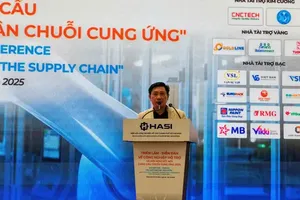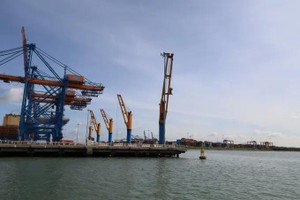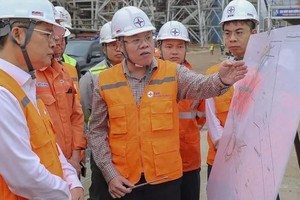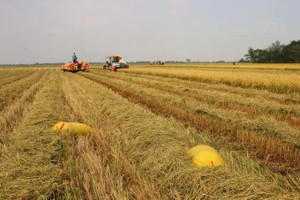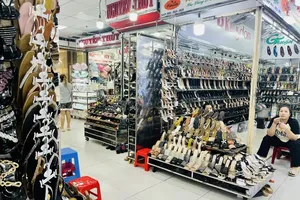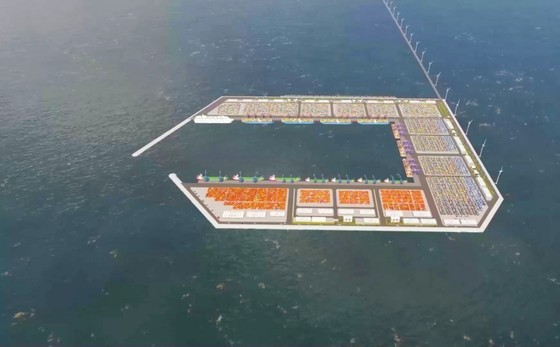 |
Perspective design of Tran De Seaport |
The to-be Tran De Seaport has a total surface area of 4,960ha, in need of over VND50 trillion (US$2.1 billion) in investment for the first stage. The area saved for an offshore port is 960ha (580ha in the first stage), and the one for logistics port, transit port, service provision on the shore is 4,000ha (1,000ha in the first stage).
Tran De Seaport has an 18-kilometer sea-crossing bridge, 15 wharfs, and an 8.3-kilometer breakwater. It can accommodate multi-purpose ships, 100,000 DWT container ships, 160,000 DWT bulk carriers with a capacity of 80-100 million tonnes per year.
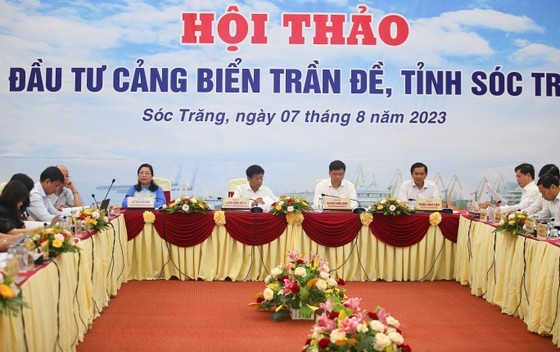 |
Participants in the conference |
The port satisfies cargo transport demands in the seven Mekong Delta provinces of Tra Vinh, An Giang, Kien Giang, Hau Giang, Soc Trang, Bac Lieu, Ca Mau, and Can Tho City.
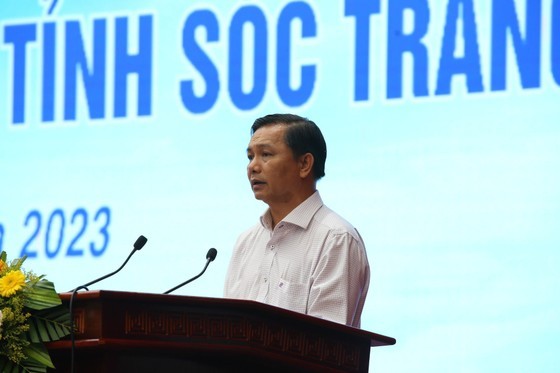 |
Chairman of Soc Trang Province People’s Committee Tran Van Lau is delivering his speech |
Chairman of Soc Trang Province People’s Committee Tran Van Lau stated that at present, the traffic infrastructure in the Mekong Delta region is rather limited and inconsistent, leading to loose transport links between provinces, not to mention the small scale of goods transport via waterways and a lack of port hubs or major logistics centers for goods transshipment. Therefore, when completed, Tran De Seaport and its related traffic facilities provide a valuable chance for economic growth in the Mekong Delta region.
President of the Board of Directors of Sao Ta Food JSC. Ho Quoc Luc informed that each year, his company exports around 30,000 tonnes of seafood via ports in the Southeast area of the country, which are rather far away from its warehouse. Thus, the two-way shipping cost for each 40-foot refrigerated container reaches US$700. He hoped that Tran De Seaport can help the company save about VND20 billion ($842,800) per year of cargo transport as well as reduce risks during this transport. This will greatly boost the competitiveness of the business in fierce international markets.
Also in hope of seeing a well-operated Tran De Seaport is General Director Pham Thai Binh of Trung An Hi-tech Agriculture JSC. He said that the Mekong Delta region houses large manufacturing sites for the fields of aquatic products, rice, and vegetables & fruits. Tens of millions of tonnes of merchandise are exported each year. His company alone sells 200,000 tonnes of rice a year to foreign buyers. The appearance of Tran De Seaport will give more favorable conditions for goods import-export tasks.
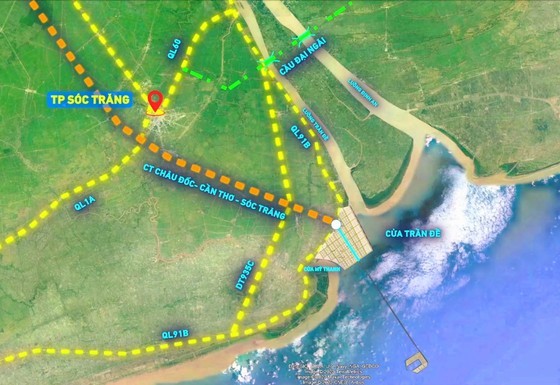 |
The transport system in the Mekong Delta linking to Tran De Seaport |
Deputy General Director Nguyen Anh Tuan of T&T Group proposed that the Government should consider subsidizing capital for the construction of the 18-kilometer sea-crossing bridge to reduce the pressure of seeking investment since this area is a poor one. He suggested applying the model of selecting investors for projects with special incentives and introducing a project running time of 70 years so that investors are able to have stable incomes.
Another recommendation of capital subsidy from the Government is the idea of Deputy Director Nguyen Van Tuan of the External Relationships Department in Sun Group. The proposed structure to receive financial aid is the breakwater. In addition, he suggested a corporate income tax reduction or exemption as well as land rent decreases for port operators and exploiters. Along with that are suitable policies for sand mine exploitation to serve construction tasks, channel dredging to connect to the new port, and land clearance in the form of public investment.
 |
Deputy Minister of Transport Nguyen Xuan Sang is delivering his speech |
Deputy Minister of Transport Nguyen Xuan Sang stated that in the first quarter of 2024 at the latest, his Ministry will announce the master planning, the 5-year planning, and the detailed planning for the land and water of Tran De Seaport to be the basis for attracting investments.










